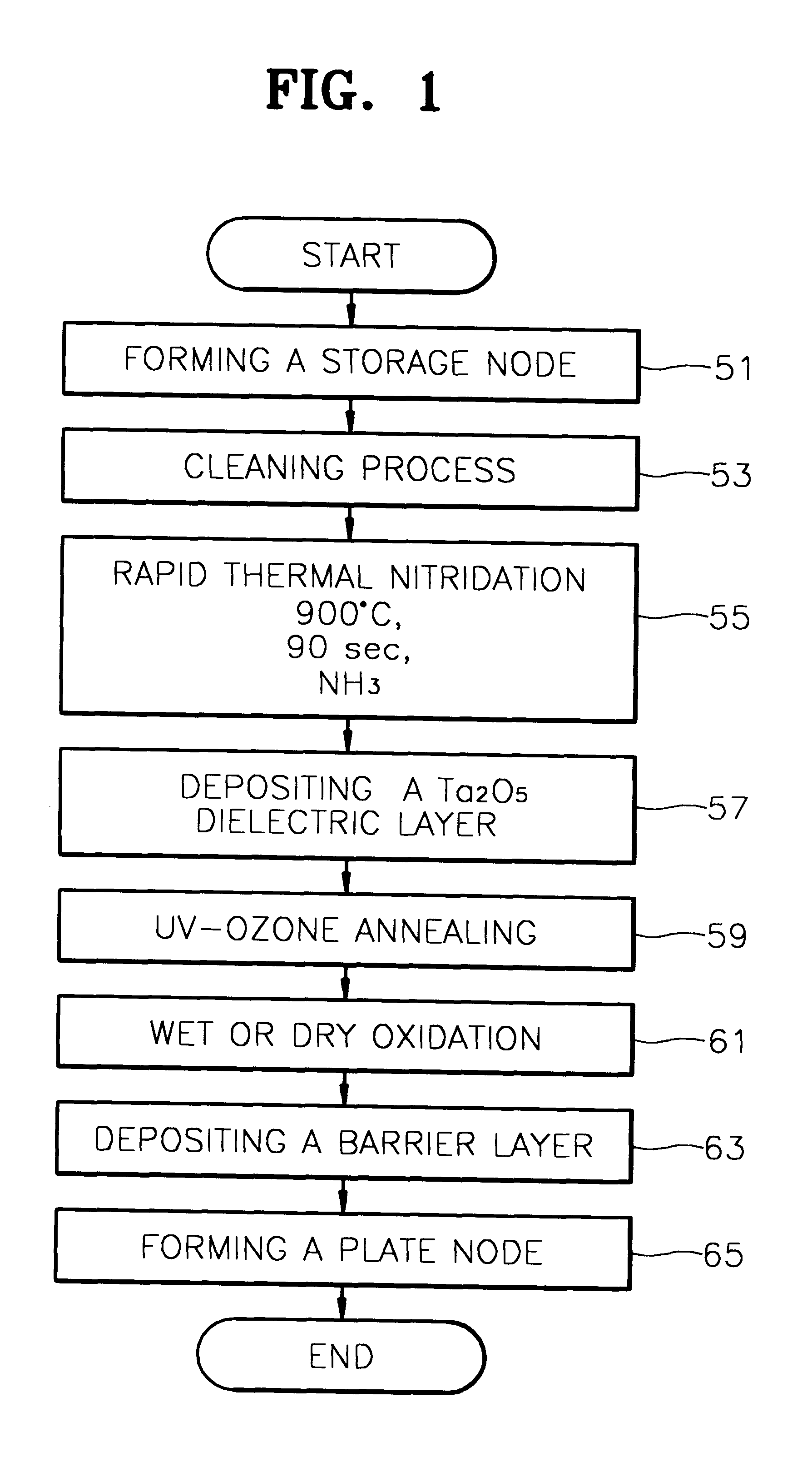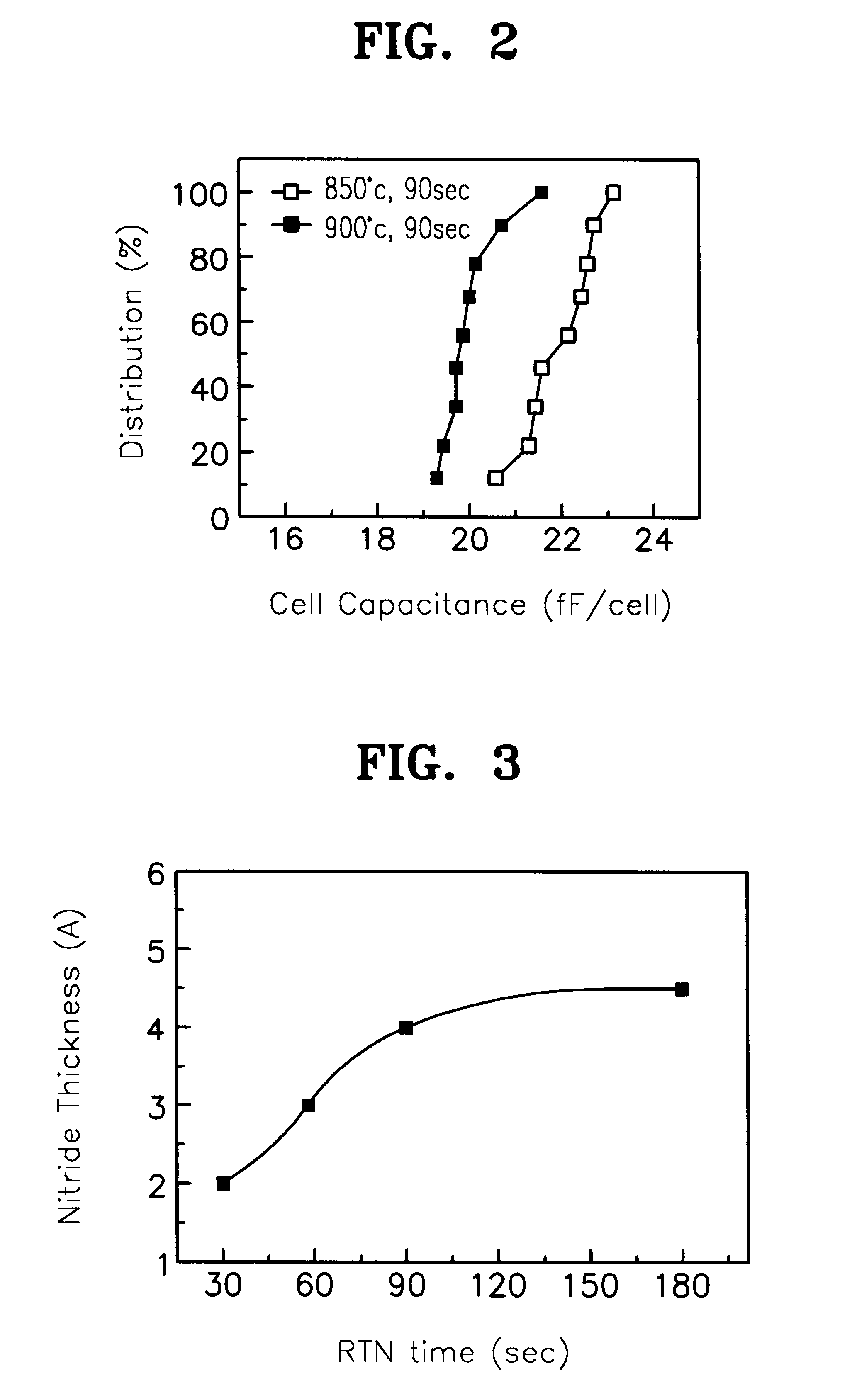Method for forming a tantalum oxide capacitor using two-step rapid thermal nitridation
a technology of tantalum oxide dielectric and thermal nitridation, which is applied in the direction of capacitors, semiconductor devices, electrical apparatus, etc., can solve the problems of reducing the refresh time, reducing the reliability and yield ratio of the capacitor, and reducing the size of the memory cell
- Summary
- Abstract
- Description
- Claims
- Application Information
AI Technical Summary
Problems solved by technology
Method used
Image
Examples
Embodiment Construction
FIG. 6 is a graph illustrating the difference in cell capacitance between an exemplary device formed through the conventional one step RTN process at 900.degree. C. and an exemplary device formed through a two step RTN process according to the present invention at 800.degree. C. and 850.degree. C. Referring to FIG. 6, the Y-axis indicates a distribution (%) of measured points and the X-axis indicates cell capacitance values (fF / cell). When the one step RTN is performed at 900.degree. C., i.e., in a line represented by (.box-solid.), the capacitance of the resulting cells is 19.about.21.2 fF / cell. This is because HSGs on the surface of a storage node are agglomerated due to the high temperature of 900.degree. C., thereby reducing the overall surface area of the storage node. However, with the two step RTN performed at 800.degree. C. and 850.degree. C., i.e., in a line represented by (.quadrature.), the capacitance of the resultant cells is 22.about.25.5 fF / cell. This is because a rel...
PUM
 Login to View More
Login to View More Abstract
Description
Claims
Application Information
 Login to View More
Login to View More - R&D
- Intellectual Property
- Life Sciences
- Materials
- Tech Scout
- Unparalleled Data Quality
- Higher Quality Content
- 60% Fewer Hallucinations
Browse by: Latest US Patents, China's latest patents, Technical Efficacy Thesaurus, Application Domain, Technology Topic, Popular Technical Reports.
© 2025 PatSnap. All rights reserved.Legal|Privacy policy|Modern Slavery Act Transparency Statement|Sitemap|About US| Contact US: help@patsnap.com



